Agonising rites of the crocmen: The skin cutting ritual of Kaningara tribe, New Guinea
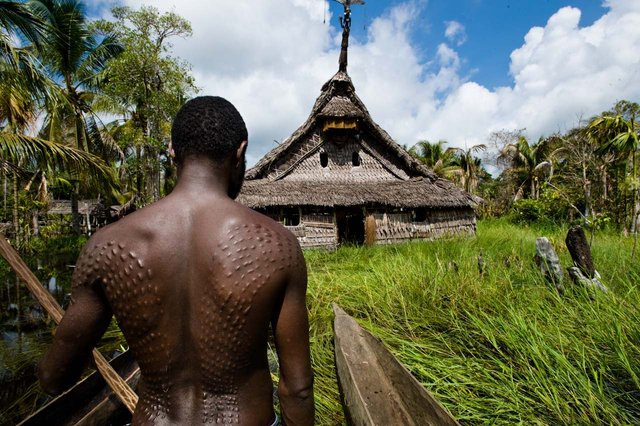
In A Nutshell:
Boys as young as 11 in a Papua New Guinean tribe risk their lives to take part in a generations old ritual that pays tribute to the crocodile which leaves them with scale-like skin similar to the water-lurking reptile.
The male members of the Chambri tribe - who live 721km north-west of Port Moresby near Chambri Lake - undergo this painful initiation to transition from being a boy to a man.
It involves the boys having their skin cut a number of times and then healing which leaves marks that resemble those of crocodile scales.
The Kaningara People:
The Kaningara people of Papua New Guinea live in a secluded jungle area of the island. They are a community of hunters and gatherers and survive off of the resources of the earth. Like any community, that live in seclusion, the Kaningara people take part in a number of traditions and rituals that are crucial to their identities. Coming from an African descent, many of their practices mirror those of African traditions. One of these extremely important practices, which marks the transition from boyhood to manhood, is the tradition of skin cutting, or scarification. In fact, places along Papua New Guinea’s largest river, the Sepik, is where the most intricate, yet bloody body modifications can be found. The initiation rituals, which are held in the “Spirit House” are among the most intricate and private, since they take a long time to finish and are strictly forbidden to women.
The Initiation Ritual:
The Kaningara boys who undergo the ritual can be anywhere from 12-35 years of age. This is an expensive ritual, which takes the parents and families a long time to save money for their sons to undergo the cutting ceremonies. The age gap is also wide because these rituals only occur every 4-5 years. During this time, they reside in the Spirit House for 1-3 months, where they receive training, from the elders, on how to be a man and how to embody the manly identity. They are submitted to the scarification rituals, which may take days to weeks to finish. Once the scarring is done, the boys’ cuts are filled with medicinal mud and herbs to aid in the healing of the scars. The place where the cutting takes place resembles that of a bloody war ground. This is done on purpose, to symbolize strength and survival. It is of Kaningara belief that men should reside in Spirit Houses for a major part of their day after they have undergone initiation rituals, because it is there where they discuss village matters, where they bond with other men, and where they ultimately prepare for war, if needed. It is also important that men travel in groups and undergo scarification rituals in groups to strengthen their bonds and relationships.
Scarification as a Masculine Practice:
Body modifications and scarring, a common practice among African tribes and villages, are used to mark a transition in age, class status, gender differences, and position in society. According to Schildkrout (2004),
“Scarification denoted age, gender and political authority.”
The cutting of the skin and enduring pain, has symbolic meanings to these peoples. For the Kaningara men, not only does it signify strength, masculinity and dedication to the tribe, but it is an exclusively male practice that emphasizes the importance of brotherhood. These rituals symbolize the expelling of the mother’s post-partum blood. This is why there are hundreds of small cuts made in the torso area, to expel blood from the mother and to allow the crocodile spirits of manhood to enter the male body. This symbolizes the divorce of young men from their mothers, and it prepares them for a symbolic transition into being “as strong as the crocodiles of the Sepik.” These rituals emphasize the importance of a “male-centered” community and symbolize the idea that “men come from other men.” According to Kaninghara myths, it was initially women who resided in the Spirit House, but the men stole the right and became the “bearers of man.” This is evident in the fact that women are not allowed anywhere near the Spirit House.
What about Women?
Women are strictly prohibited from the Spirit House because this is a place where men go to find their identities and to be among the company of other men. Women are not even allowed to join in the cutting ceremonies or help in the cleaning of the scars. According to the Kaningara people, if a woman enters the Spirit House she must be killed, that is how sacred it is. It is so important and prohibited that women do not approach the Spirit House that they are not even allowed to listen to the music played in the Spirit House.
What is so important about Skin Cutting?
This topic is important and interesting because it shows the importance of a coming of age ritual that is extraordinary for some. Like in modern culture, the equivalence of this would be a teenager getting their license or graduating high school. However, this practice is not only significant but at the same time interesting because the boys have to endure physical pain and bleed out their “birth blood” to be seen as men in the community. If they cannot take the pain from the cuts and bleeding, and die, they are remembered as weak men and incapable of fulfilling the male role in the community. This is equivalent to the male role in today’s society where the man has to work to provide for his family and if he does not do so, he is seen as weak and incapable of caring for his family. These practices, to western culture, may seem obscene and unhealthy, but as they undergo body modifications, each culture has their own way of expressing their coming of age ceremonies and rituals.
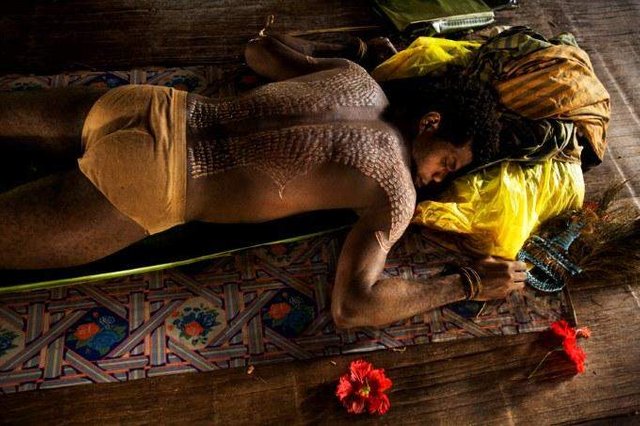
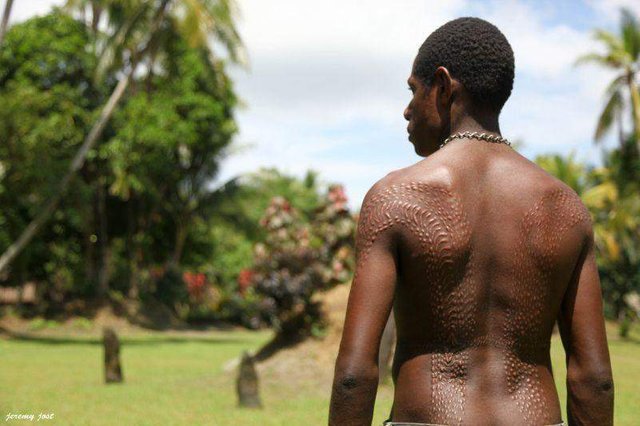
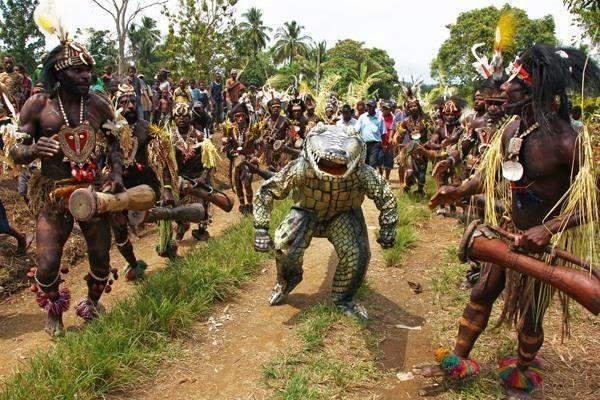
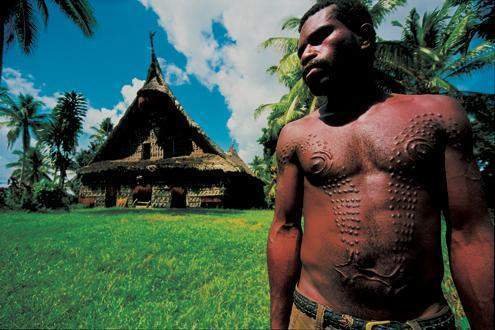
Warning! Graphic Content Ahead!
.
.
.
.
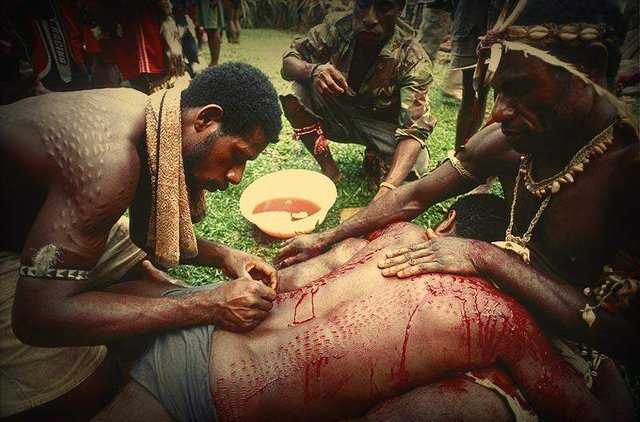
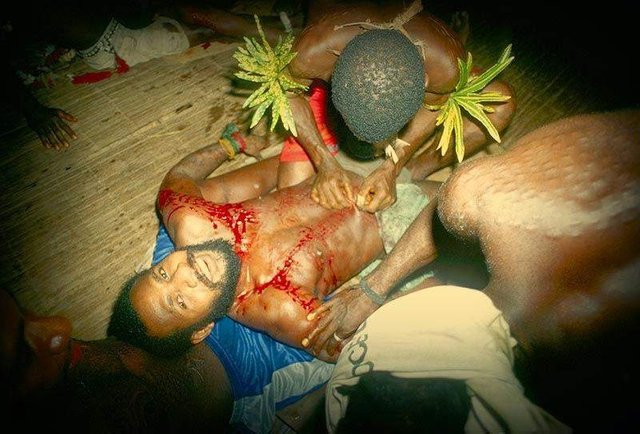
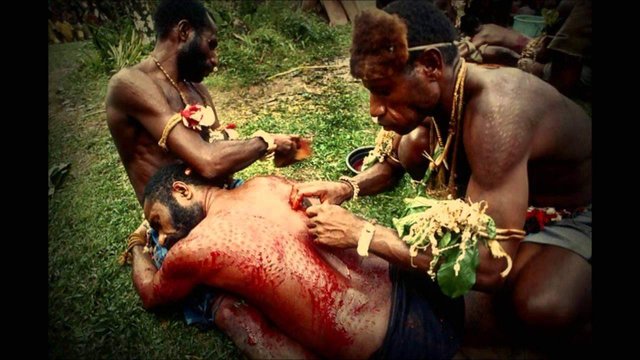
Beautiful place and pictures. @lior-h
Thank you!